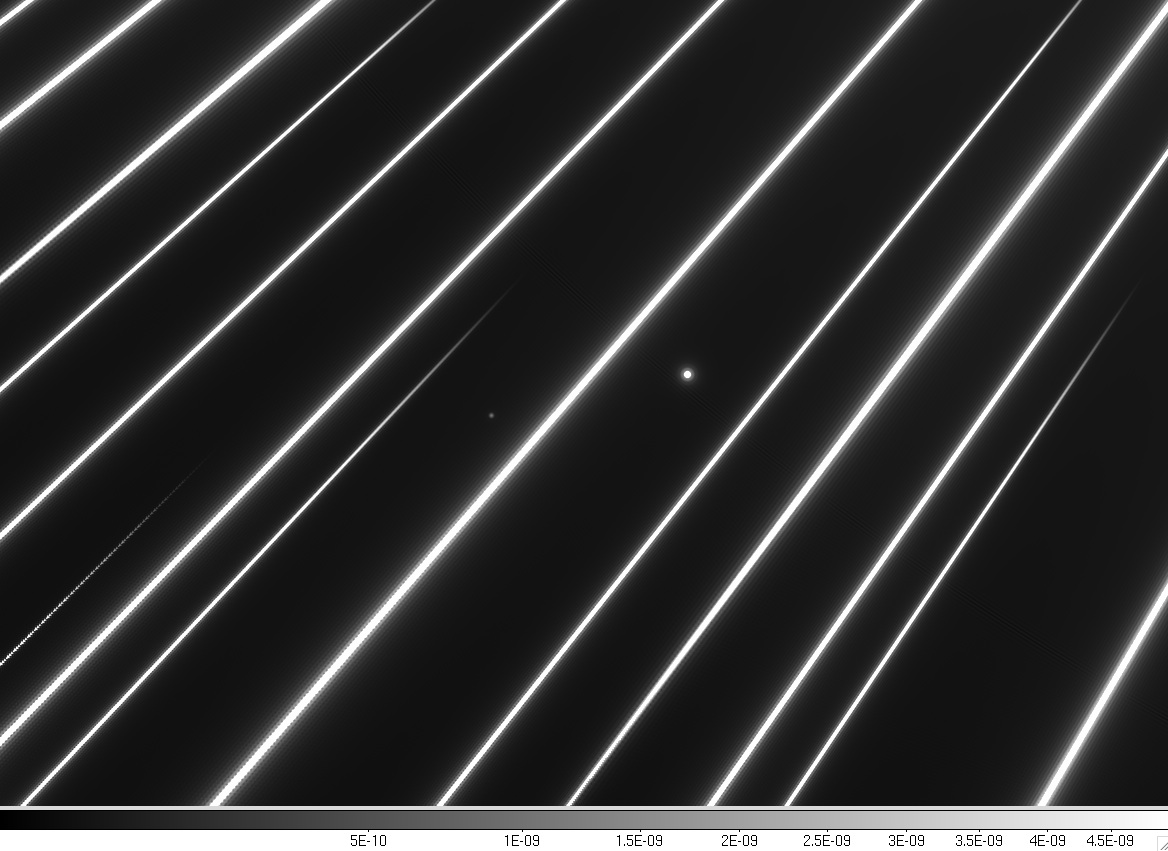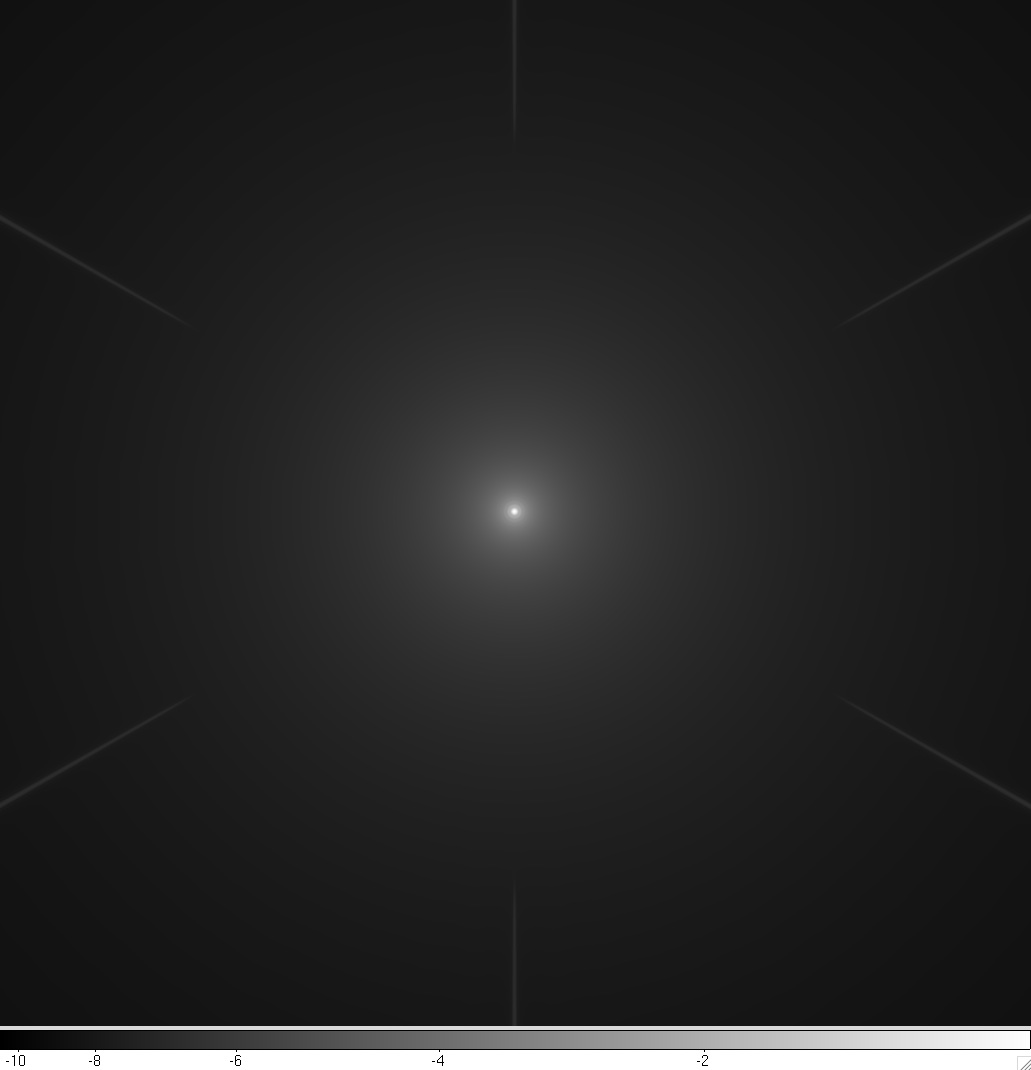
Since all astrometric distortions (due for example to changes in optics shapes of M2, M3, and deformations of the focal plane array) are common to the spikes and the background stars, the astrometric measurement is largely immune to large scale astrometric distortions. This concept does not require the ~pm level stability on the optics over yrs which would otherwise be essential in wide field astrometric imaging telescope.
The wide field off-axis 1.4-m diameter telescope design shown in Figure 1-1 produces a 0.5 deg x 0.5 deg diffraction-limited wide field image for astrometric measurement and feeds a coronagraph instrument with a 6" field of view extracted in the intermediate focus. This design is inspired from the PECO mission concept study, and is adopted in this document.
 |
Fig 1-1: Example of a telescope architecture for simultaneous coronagraphic imaging and astrometry. The design shown in this figure is for a 1.4-m telescope, and offers less than 10-nm wavefront error in a 0.4 deg diameter field. The telescope primary mirror is covered with small dots. [png] |
 |
Fig 1-1(b): Conceptual optical design for the diffractive pupil telescope (DTP). The top part of this figure shows how light is shared between two instruments. The central field containing the bright star and its immediate surroundings is extracted at the telescope’s intermediate focus and fed to a coronagraph instrument for high contrast imaging. The wide well-corrected outer field is imaged onto a large focal plane detector array. Panels (a) to (d) show details of the wide field image acquired in the final focal plane. (a) The wide-field image shows the diffraction spikes introduced by the dots on the primary mirror. (b) The central part of the target image, containing most of the flux, is missing from the wide-field image as it has been directed to the coronagraph instrument. (c) Faint diffraction spikes pave the rest of the field. (d) Faint background stars are imaged simultaneously with the diffraction spikes. While images (a) to (c) are simulated, image (d) was acquired in a laboratory demonstration of the technique. [jpg] [eps] |
 |
Fig 1-2: Dots on the telescope primary mirror (left) and corresponding on-axis PSF in the wide field astrometric camera. [png] |
 |
Fig 1-3: Geometry of the spikes in the wide field of view camera.
[png]
The spacing between the spikes, their extent in the focal plane and their overall luminosity can be chosen by appropriate design of the dot pattern on the pupil. |
 |
Fig 1-4: Tilt anisoplanatism due to changes in M2's shape creates an astrometric error.
[jpg]
|
 |
Fig 1-5: Detail of region in the wide field camera (sqrt scale).
[jpg]
The diffraction spikes from the central star (located to the upper right of this field) are running across the image, elongated due to plate scale chromaticity. Two fainter background stars are visible. All astrometric distortions (due to optics or detector geometry variations) will affect equally the background stars and the spikes. |
| |
For the spikes to encode the same astrometric distortions as the background stars:
|
 |
Fig 1-3: Central part of the PSF (log scale, 29 arcsec x 29 arcsec). The PSF is shown here with no coronagraph pickoff mirror.
[jpg]
In this configuration, the diffraction spikes do not affect the central 13 arcsec around the optical axis, and have no effect on coronagraphic performance. The halo around the central star is due to the PSF's Airy rings. |